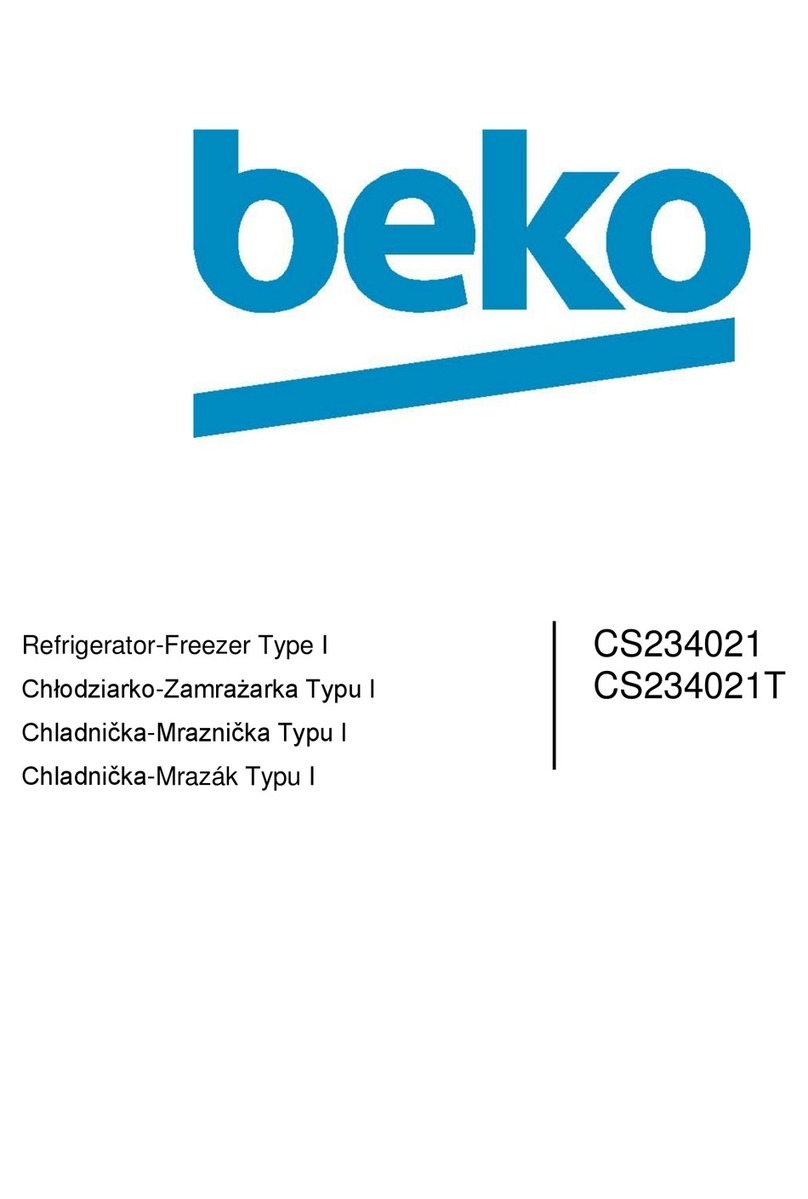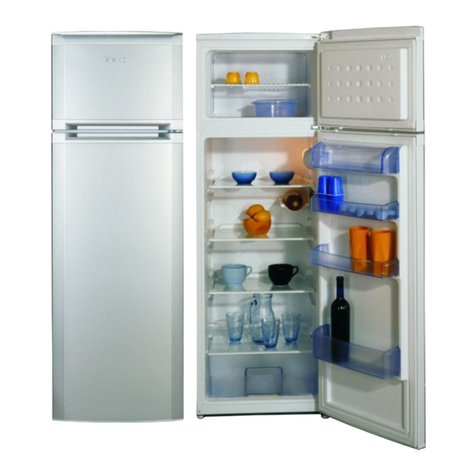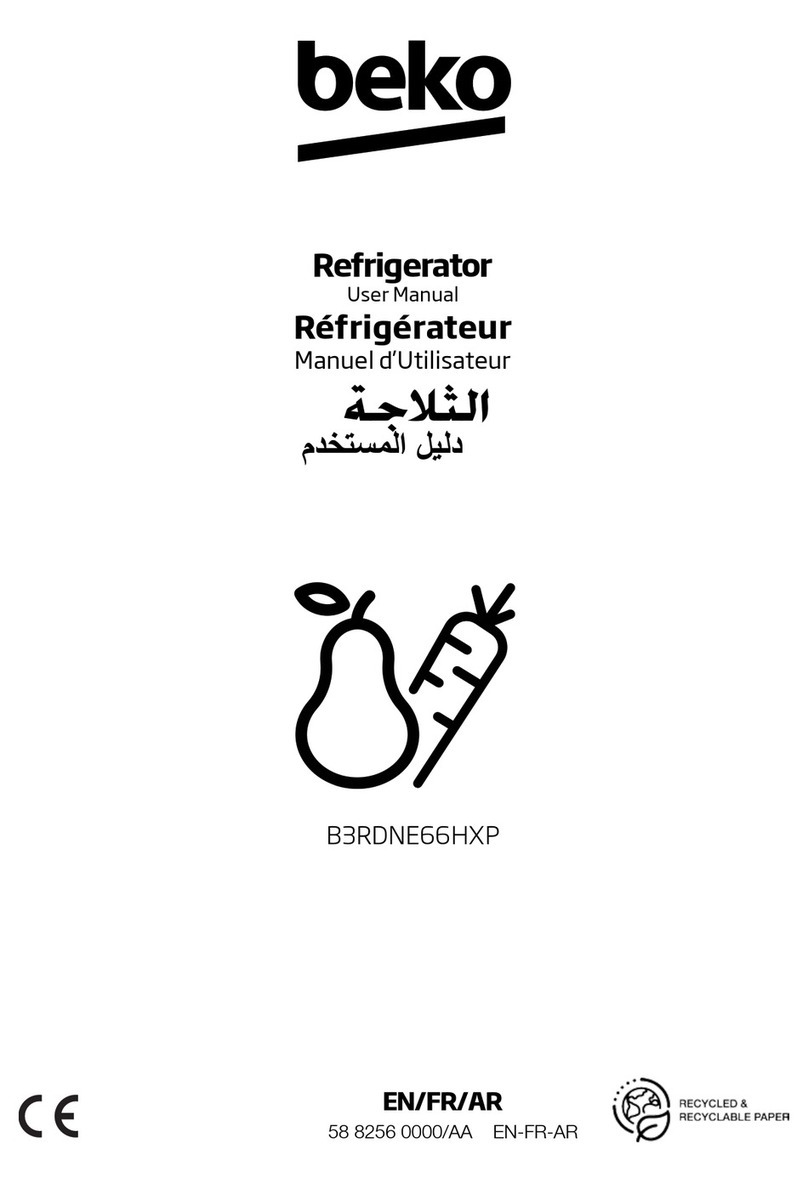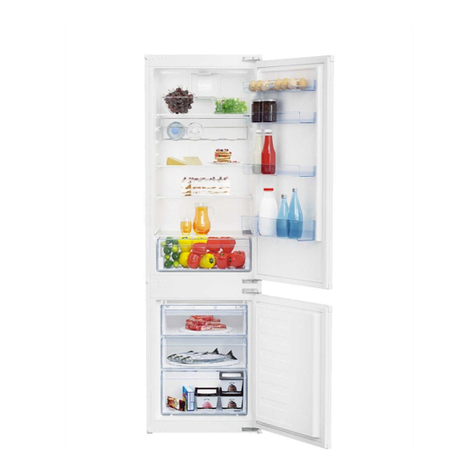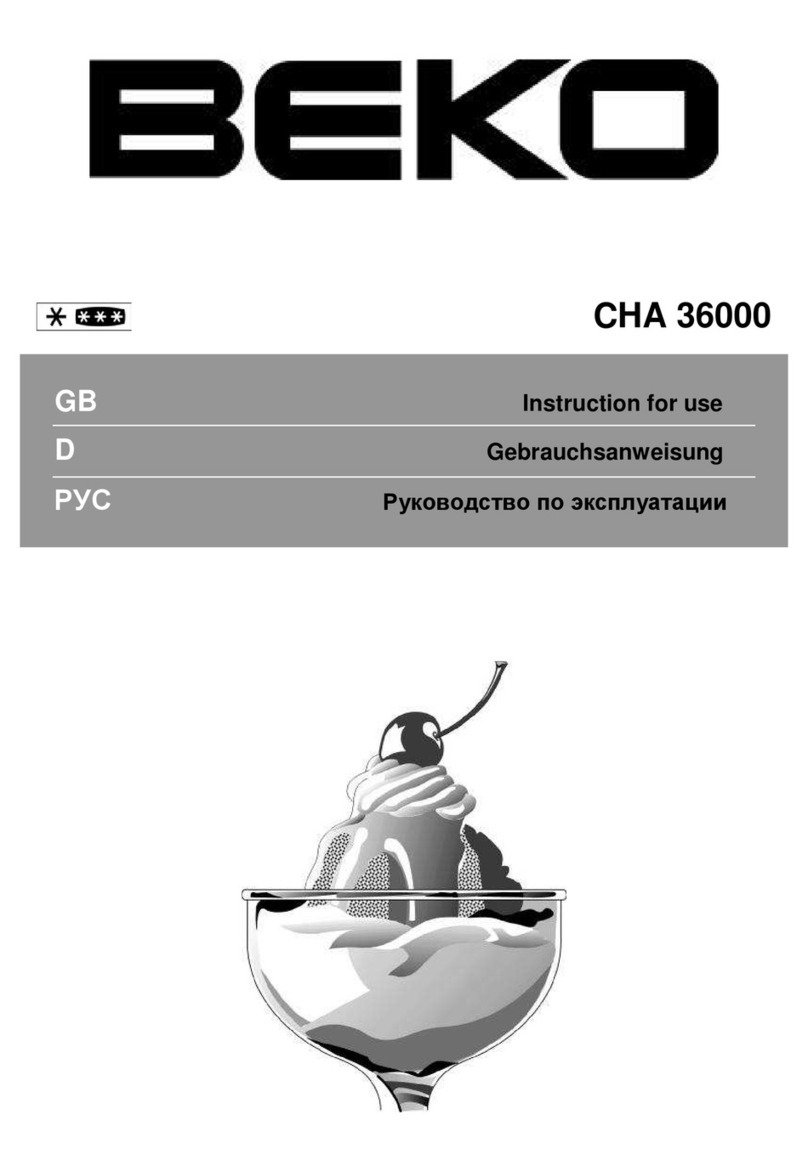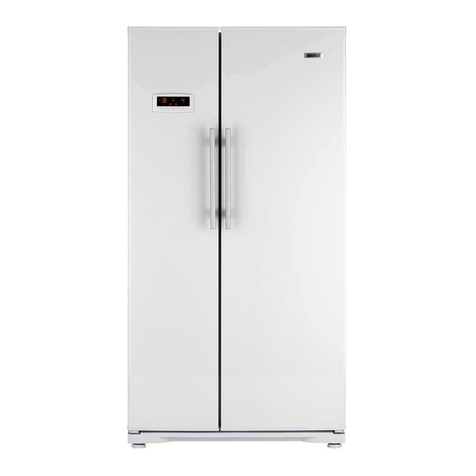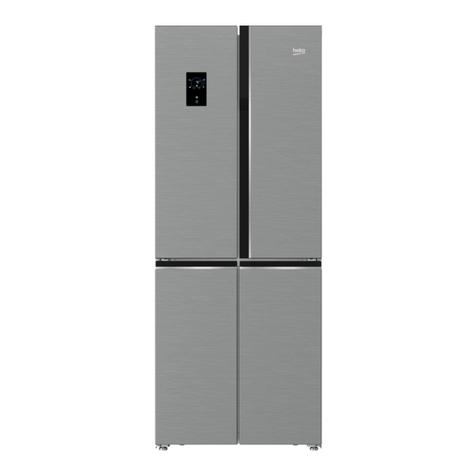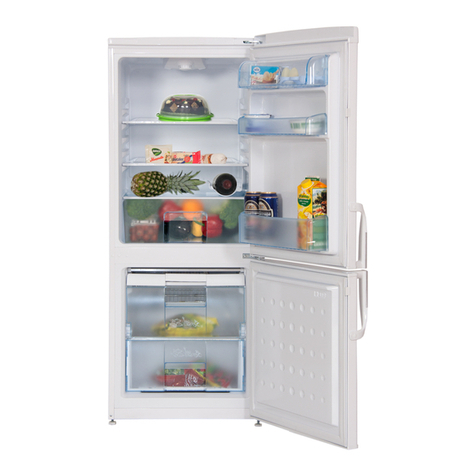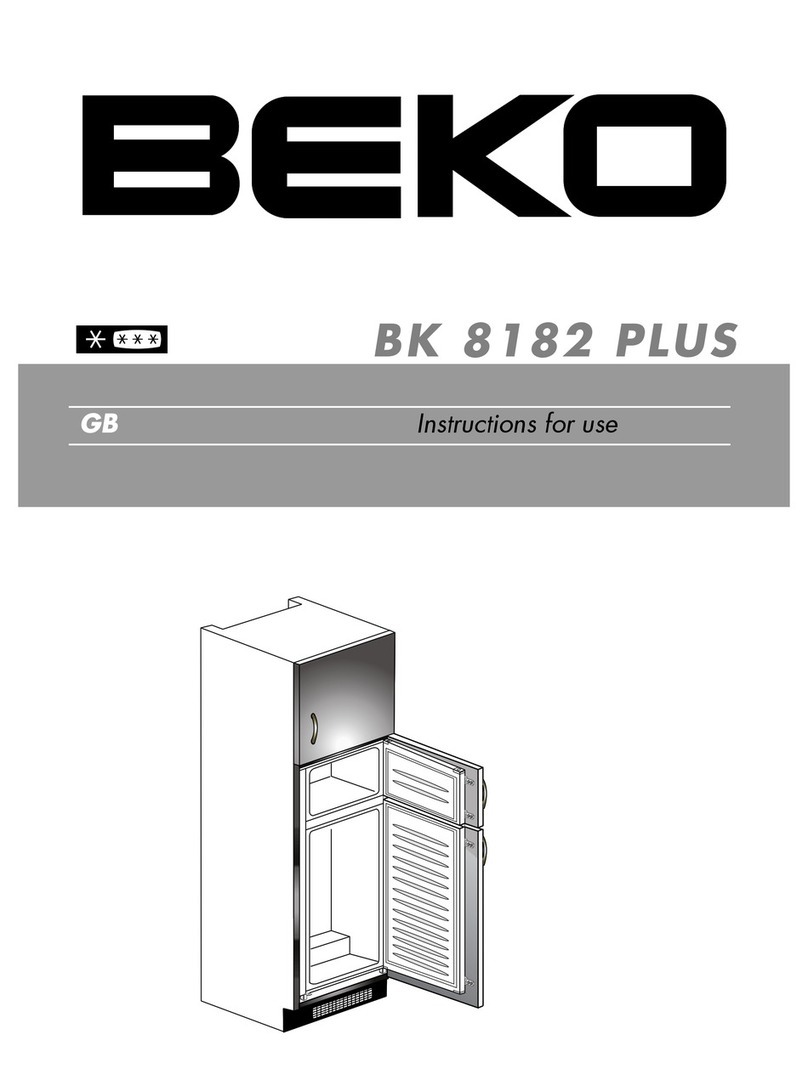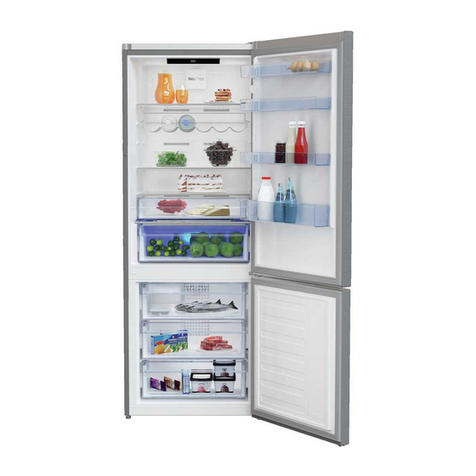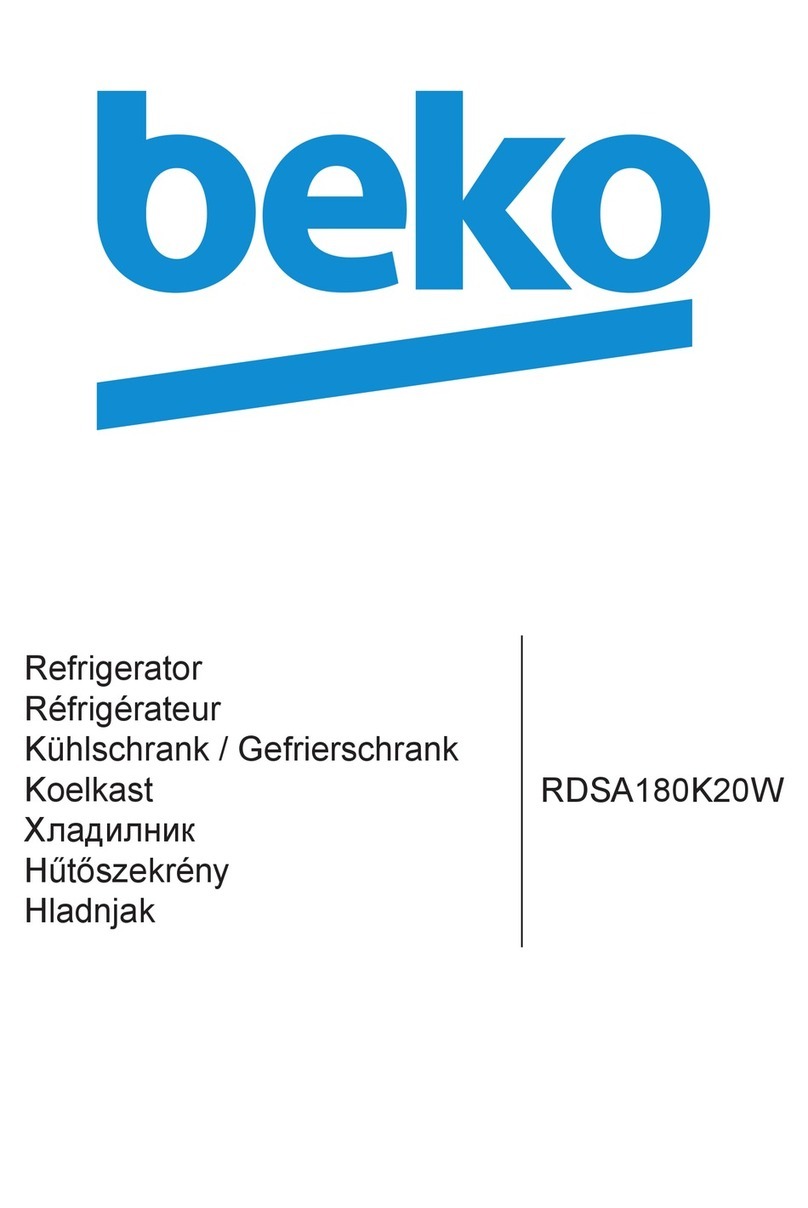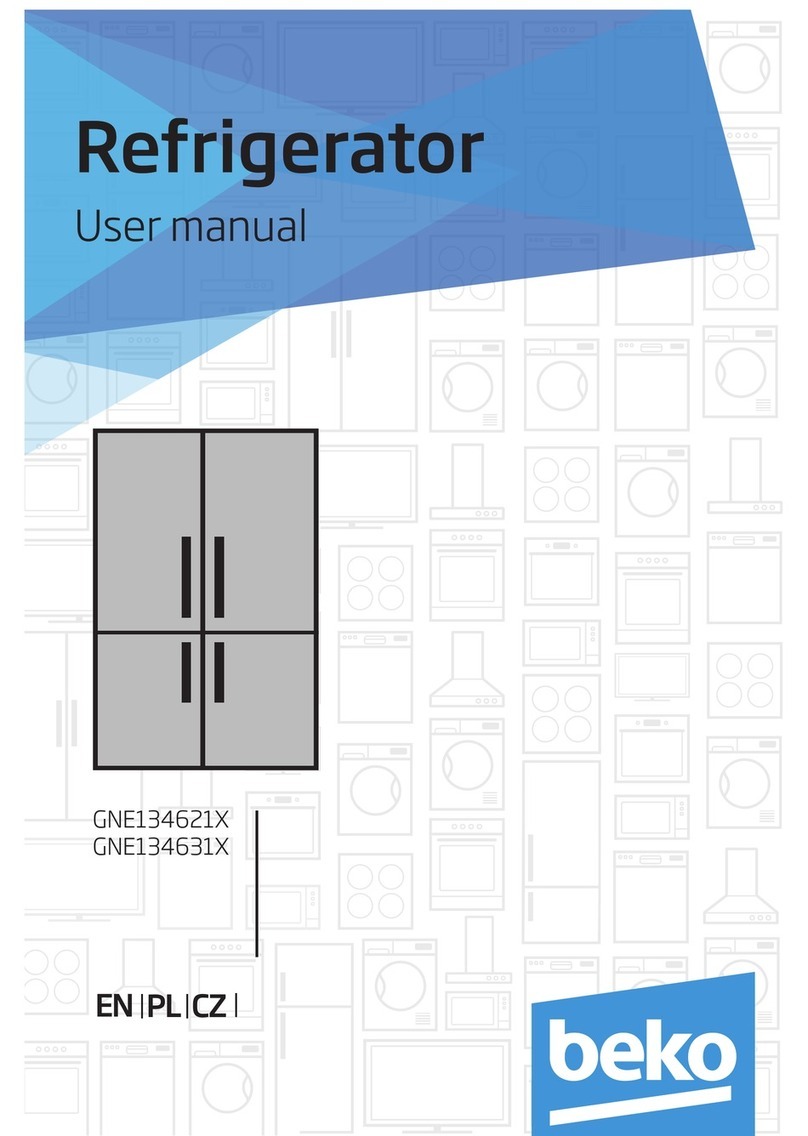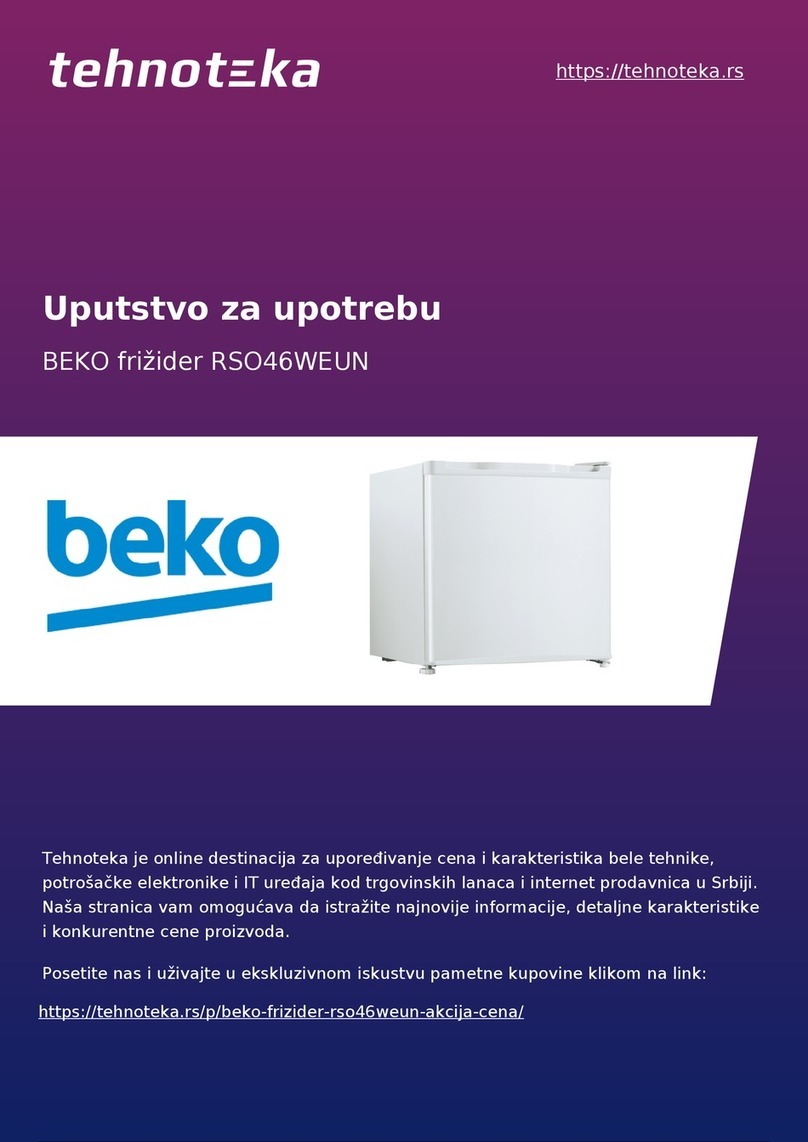WARNING!
In order to ensure a normal operation of your refrigerating appliance, which uses a completely environmentally friendly refrigerant the
R600a (flammable only under certain conditions) you must observe the following rules:
Do not hinder the free circulation of the air around the appliance.
Do not use mechanical devices in order to accelerate the defrosting, others than the ones recommended by the manufacturer.
Do not destroy the refrigerating circuit.
Do not use electric appliances inside the food keeping compartment, other than those that might have been recommended by the
manufacturer.
WARNUNG!
Ihr Gerät verwendet ein umweltverträgliches Kältemittel, R600a (nur unter bestimmten Umständen brennbar). Um einen einwandfreien
Betrieb Ihres Gerätes sicherzustellen, beachten Sie bitte folgende Vorschriften:
Die Luftzirkulation um das Gerät darf nicht behindert sein.
Verwenden Sie außer der vom Hersteller empfohlenen, keine mechanischen Hilfsmittel, um den Abtauprozess zu beschleunigen.
Der Kältemittelkreislauf darf nicht beschädigt werden.
Verwenden Sie im Lebensmittelaufbewahrungsbereich Ihres Gerätes keine elektrischen Geräte, es sei denn, sie sind vom Hersteller
empfohlen.
ATTENTION!
Pour assûrer un fonctionnement normal de votre appareil qui utilise un agent frigorifique complètement écologique, R600a (infammable
seulement dans certaines conditions) vous devez respecter les règles suivantes:
N’empêchez pas la libre circulation de l’air autour de l’appareil.
N’ utilisez pas des dispositifs mécaniques pour accélérer le dégivrage, autres que ceux récommendés par le fabriquant.
Ne détruissez pas le circuit frigorifique.
N’utilisez pas des appareils électiques à l’intérieur du compartiment pourconserver les denrées, apart celles qui sont éventuellement
récommendés par le fabriquant.
WAARSCHUWING!
U moet de volgenderegels in acht nemen om denormalewerking van uw koelkast, diehet volledigmilieuvriendelijkekoelmiddel R600a gebruikt, te
verzekeren:
Hinder devrijeluchtcirculatie rond het toestel niet.
Gebruikgeen anderemechanischetoestellen om het ontdooien te versnellen dan detoestellendiedoor defabrikant worden aangeraden.
Vernietig hetkoelcircuitniet.
Gebruikgeen andereelektrische toestellenindebewaarladevoor etenswaren dan detoestellendie eventueel door defabrikant worden
aangeraden.
UWAGA!
Producent nie będzie ponosić odpowiedzialności za szkody wynikłe z niestosowania się do zaleceń zawartych w instrukcji obsługi.
Instrukcję obsługi należy przechowywać w bezpiecznym miejscu tak, aby można było z niej korzystać w razie konieczności. Może być ona
przydatna również dla innego użytkownika.
UPOZORNĚNÍ!
Aby byl zajištěn normální provoz vaší chladničky, která používá pro životní prostředí zcela neškodné chladicí médium R600a (vznětlivé
pouze za určitých podmínek), musíte dodržet následující pravidla:
Nebraňte ve volné cirkulaci vzduchu kolem přístroje.
Nepoužívejte mechanická zařízení pro zrychlení odmražení kromě těch, která jsou doporučená výrobcem.
Nelikvidujte chladicí okruh.
Nepoužívejte elektrické spotřebiče uvnitř prostoru pro potraviny kromě těch, která by mohl doporučit výrobce.
VAROVANIE!
Aby sa zabezpečila normálna prevádzka vašej chladničky, ktorá používa úplne ekologicky nezávadné chladivo R600a (horľavé len pri
určitých podmienkach), musíte dodržiavať nasledujúce pravidlá:
Nebráňte voľnej cirkulácii vzduchu okolo spotrebiča.
Nepoužívajte mechanické prístroje na urýchľovanie rozmrazovacieho procesu, iné ako odporúča výrobca.
Neporušujte chladiaci okruh.
Nepoužívajte elektrické spotrebiče vo vnútri pípacieho priestoru potravín, iné ako tie, ktoré odporúčal výrobca.
FIGYELMEZTETÉS!
Az R600a (csak bizonyos körülmények között gyúlékony) teljesen környezetbarát gázzal működő hűtőberendezés normál üzemeltetése
érdekében kövesse a következő szabályokat:
Ne gátolja a levegő keringését a készülék körül!
Ne használjon más mechanikus eszközöket a gyorsabb felolvasztás érdekében, mint amit a gyártó ajánl.
Ne szakítsa meg a hűtőközeg keringési rendszerét!
Ne használjon más elektromos eszközöket az ételtároló részben, mint amiket a gyártó javasol.
